It became clear to us that accelerators were playing an important early stage role for both entrepreneurs and investors yet were being overlooked. (Unreasonable Institute, Impact Hubs, BFI, Agora, Hub Ventures, i.e.) In 2011 Halloran began to convene an Accelerator Summit to understand and support their needs. This led to investments by Halloran in nearly 25 different accelerators. The Ande Network followed in 2013 with a special report and SOCAP supported with more accelerator-focused content.
BeDo, founded by Marc Mathieu sought to enable individuals, companies, and NGOs to recruit, engage, and retain potential supporters to power social action platforms and causes. Working with top advertising agencies, BeDo sought to pioneer a model that combined traditional page view and click-through tracking around an individual’s and organization’s initiative toward doing good. It also helped make corporate volunteer programs more visible and viable.
The first online art-science-technology network and platform allowing its members to post their projects with tags and profiles. Included Virtual Reality, robotics, art installations, web-books, software and more. Creative Disturbance connected members with resources including funding.
After co-founding Impact Hub Oaxaca, a co-working space for social entrepreneurs, in 2014 we hosted the founders of the network - now nearly 100 international Impact Hub spaces and an 11,000 member global network in 48 countries.
Developed a complete strategic and business plan for the renowned MIT Press published Leonardo Journal and its parallel activities - magazine, music journal, web and book series.
We produced New Minds in San Francisco at Yerba Buena Center of the Arts just as the Web was born. From solo talks & performances by Todd Rundgren and Thomas Dolby to panels on the future of learning with Wired founder Jane Metcalfe, author Douglas Rushkoff and host Soledad O'Brien. It turned out to be a pivotal event series drawing technology’s greatest innovators across disciplines to focus on the impact technology would have on society and culture (1997-98).
In 1961, Buckminster Fuller created the World Game as an entertaining way to engage players in solving the planet’s problems. World Game (WG) 2.0 was an attempt by the Buckminster Fuller Institute and Oglivy to create a multi-platform, continuous game that uses everyday technology to spark social change. World Game 2.0 would harness social data (tweets, likes, views, points...) by filtering it through a WG algorithm. Youth ambassadors from each country are chosen to play at WG 2.0 with online communities cheering them on. We see this as a great potential intervention to be realized.
Kevin Jones, Gary Bolles and myself set out in the late 90's to use "collective intelligence" to guide work in identifying new changes in the economic and cultural environment. We involved ourselves in projects like malaria nets in Malawi, the United Religions Initiative that had spawned hundreds of conversation circles around the world and of course what we called the Social Capital Markets leading us to form Xigi and SOCAP (the Social Capital Markets Conference).
Collective Intelligence (Kevin Jones, Gary Bolles and Mark Beam) with David Boyd (programmer and systems designer) took our mapping to the next level with software that allowed anyone in the social capital markets to define their relationships there and then be immediately connected to others with similar connections. This was a very well accepted service that enabled the market to see itself as a whole system.
This was a powerful early example of the power of networks and local-global relationships. Collective Intelligence (Kevin Jones, Gary Bolles, Mark Beam) worked with United Religions Initiative helping their international interfaith group with thousands of great stories in a 140 countries tell one overarching story of an emergent phenomenon evolving to a higher level of order, and the way it is helping eliminate religiously motivated violence. A simple algorithm - form a "cooperation circle) when you have at least 2 religions represented turns into a complex force for change.
In 2008 Cheryl Dorsey (Echoing Green( asked Wayne Silby (Founder Calvert Funds) and I to present our ideas behind stimulating more impact investment capital. This led to the formation of the Enterprise Innovation Fund with Michael Cox and a year long effort to make the case to the White House and government agencies to accelerate the supply of impact investment capital. This work helped catalyze the formation of Startup America and the creation of a billion dollar SBA Impact fund. (Obama Administration 2008-10).
In 2008-2009 we began to work with Tony Deifel and Daryl Hammond at Kaboom to create a dashboard for measuring both financial and social impact. One of the most successful example of how non-profits can be both financially and socially successful. In this case creating a scalable and replicable model for engaging volunteers, sponsors and neighborhoods to build their own playground. We helped create a very sophisticated tool for monitoring their work in realtime.
In 1998 Beaming worked closely with the Japanese Telecom company NTT who wanted to create a foothold in Silicon Valley. We provided research & development, introductions to key individuals and companies and an ongoing consulting on a retainer basis for nearly two years. Two highlights: 1) NTT became a sponsor of the New Minds lecture performance series we produced with Microsoft and Silicon Graphics; 2) Introduced the company to two companies that became giants in their respective fields - Tibco and Alexa (The Internet Archive).
A live performance of the Agua Project - a collaboration with ArtBeam, Guillemo Roél, New York artist film-maker Nicole Betancourt & audio/theater designer Bray Poor. This installation-performance included live video, a dripping faucet that produced rhythmic audio, singing, an indoor thunderstorm and stencil graffiti in the streets with a phone number for anyone to express their feelings about water (later incorporated into the piece).
In 2001 I became a partner in Virtual Reality firm Glass House Studio to leverage the power of interactive computer graphics to help organizations design & build, virtual structures. Using real-time, 3D visualization and simulation, we designed experiences, captured knowledge, created compelling stories in fully immersive, stereoscopic, virtual reality experiences. WAY AHEAD of its time, Glass House Studios participated in the early pioneering of Virtual Reality. Not ahead of its time NOW!
In parallel with the development of art-sci-tech network Creative Disturbance, in the early 2000's we also helped promote the practical design and formation of "studio-labs" built on the shoulders of Xerox PARC, EAT, MIT Media Lab etc. These were interdisciplinary startups doing research & development with byproducts that ranged from art exhibitions to wearable technologies . We successfully convinced the Ford Foundation to support a pioneering Studio Lab T-Garden with a $50,000 grant. With the Circuit4 Network work in Canada we also created a timeline of the evolution of theses labs and great interdisciplinary collaborations.
In 2004-2007 we created a studio lab / art dealership with Canadian artists Max Dean & Nichola Feldman-Kiss, and Mexican artists Guillermo Roél and Gabriela Leon. We stretched the limits of what was possible bridging countries, studios and disciplines. Resulting collaborations included a solo exhibition for Nichola in Oaxaca and for Gabriela Leon in Long Beach, CA, and a live performance of the Agua Project with Guillemo Roél, New York artist film-maker Nicole Betancourt & audio/theater designer Bray Poor.
Nichola Feldman-Kiss as one of the directors of the Canada Council of the Arts commissioned me to develop a map of the Canadian national interdisciplinary new media network of artists, scientists & technologists. The mapping project led to the development of a timeline showing the long history of development in this direction and ultimately the formation of an online network with an incredible searchable database of artists, studios, galleries, academic institutions etc. with the support of the Centre for Contemporary Canada Art.
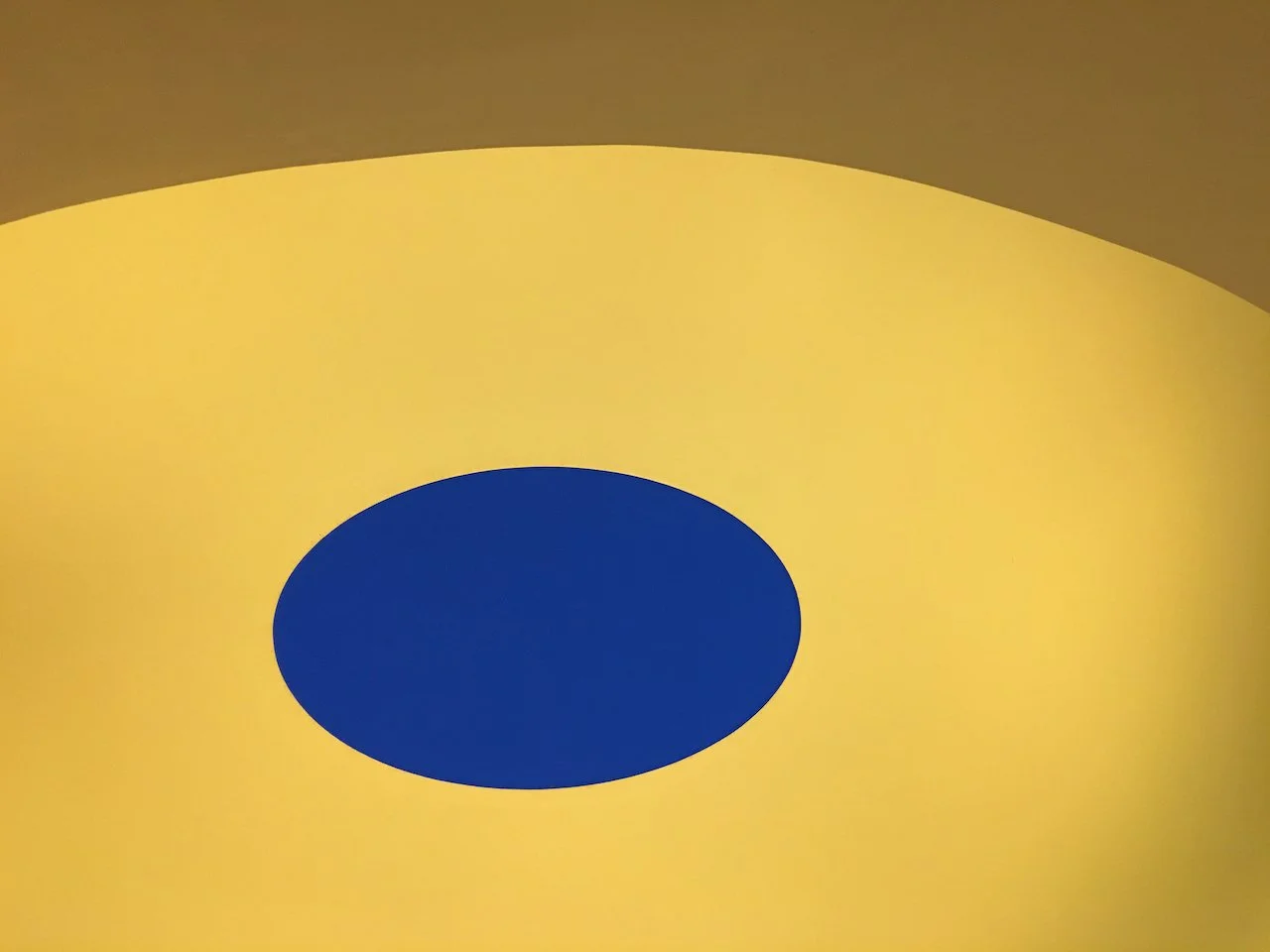




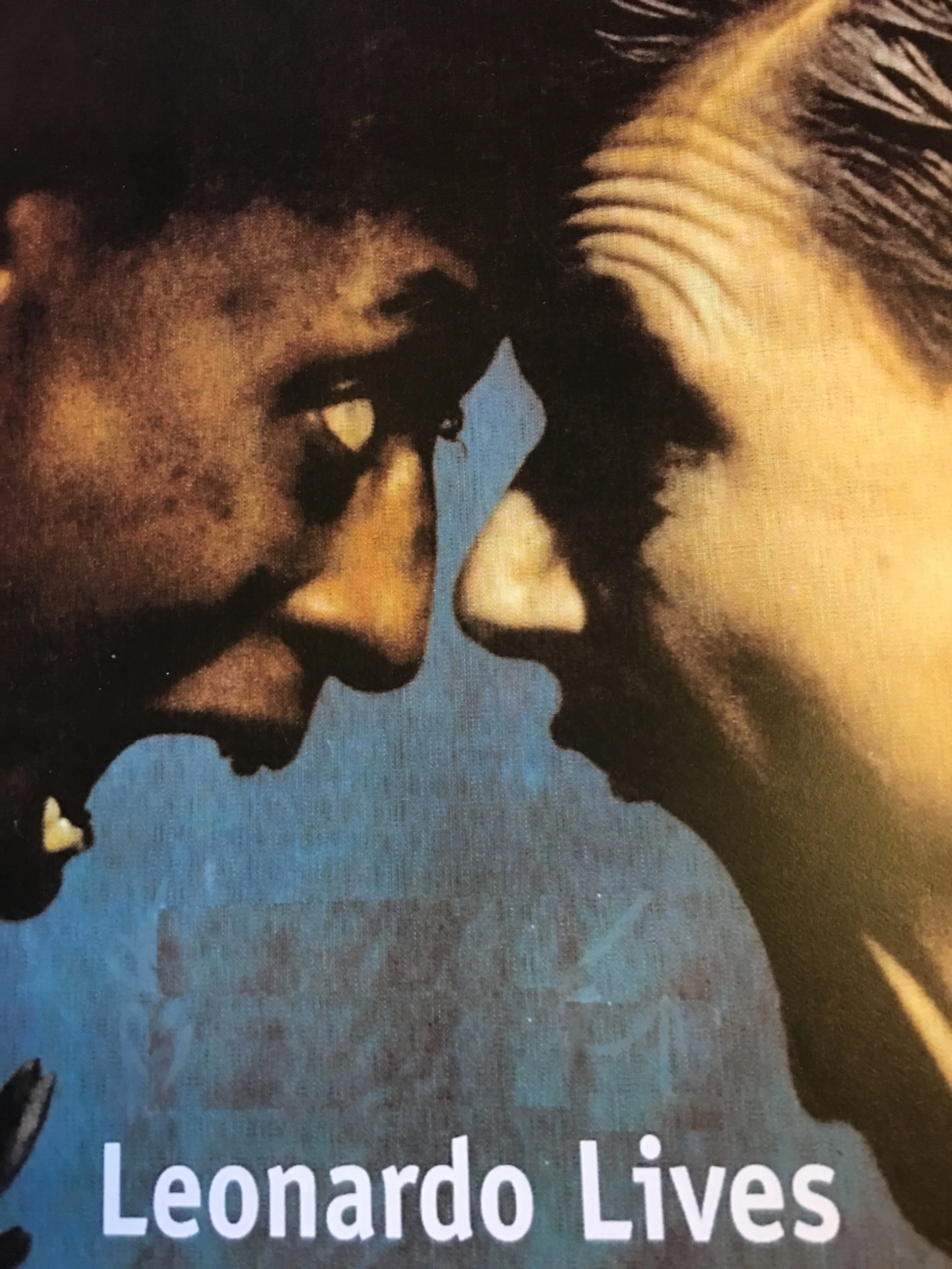











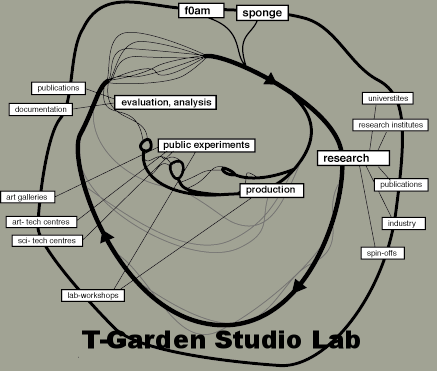
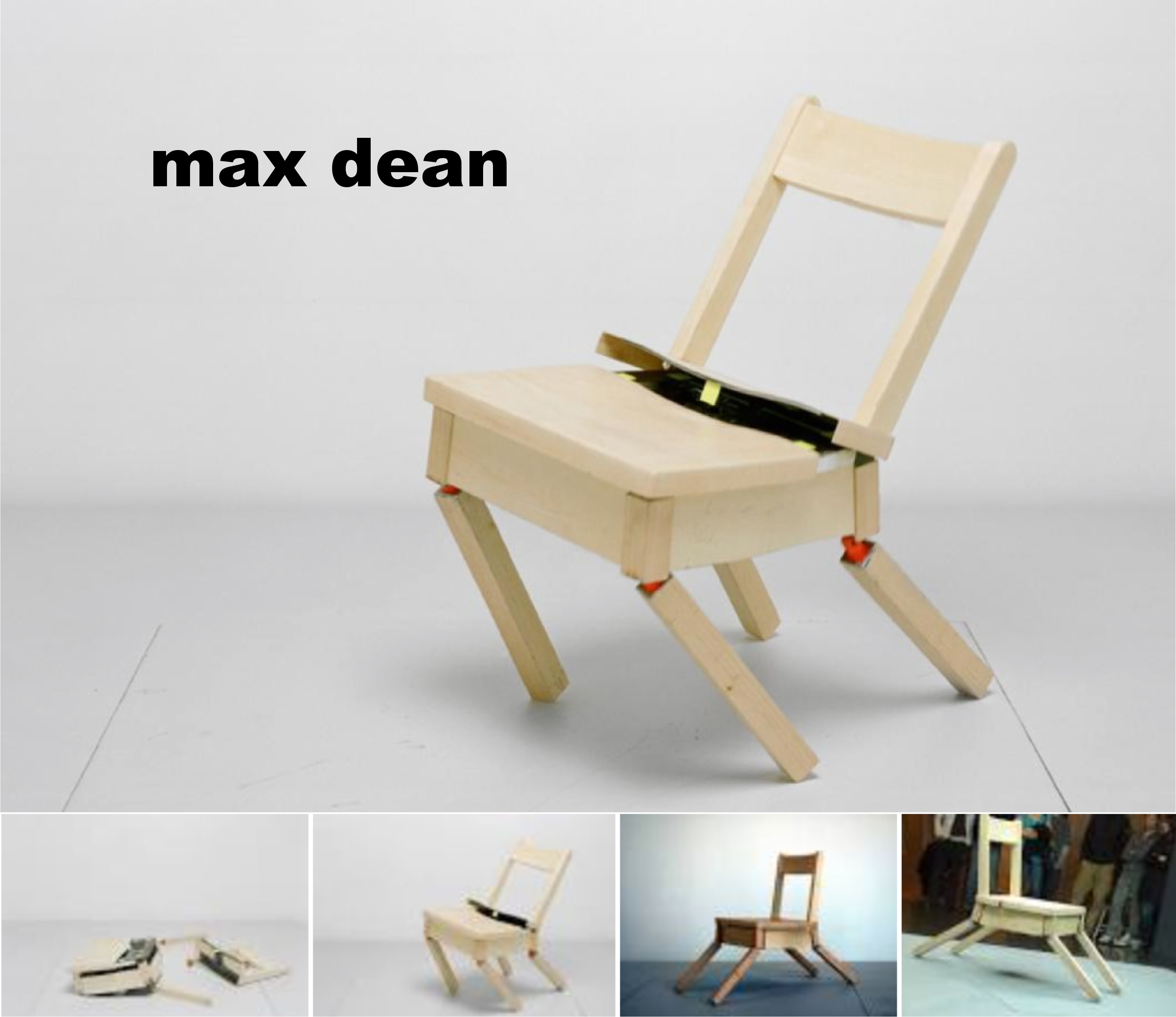
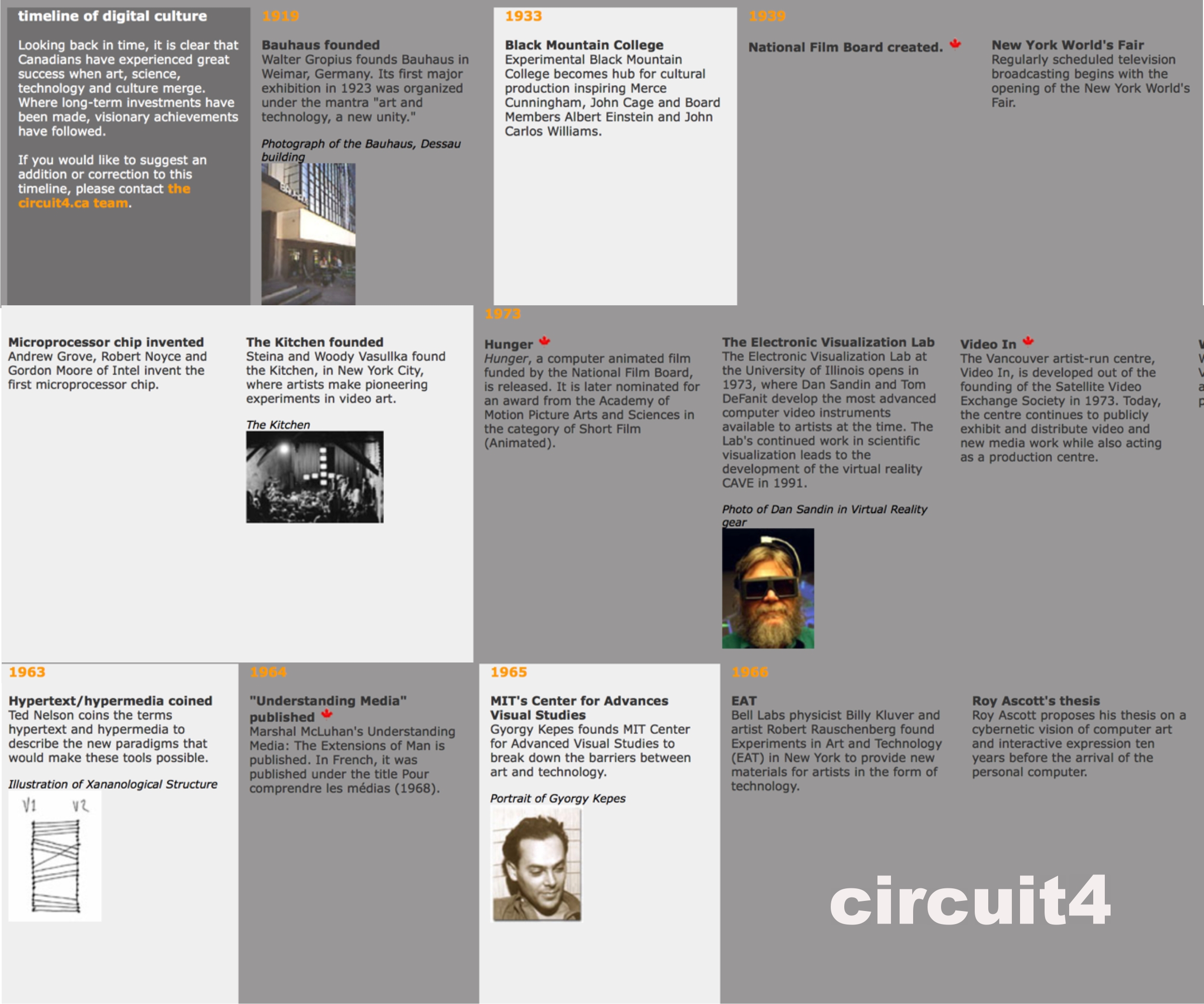
This 2001 intelligence paper by Vibeke Sorenson & Mark Beam identified developments in the application of technology in the context of our senses or “sensual media.” We catalogued the use of creative techniques, technologies, and experimental research coming out of leading universities and independent studio-labs, as well as the work of artist/researchers.